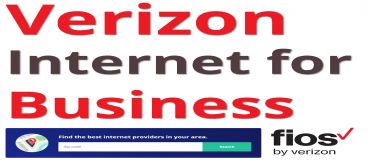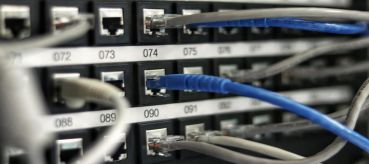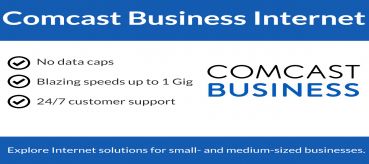Why Fiber Technology is the Road For Eco-Friendly Network?

With the US government investing billions of dollars to extend broadband coverage across the country, it's critical to invest in the most long-term internet type possible. Despite the fact that fiber-optic infrastructure deployment has become a priority in many parts of the world, it is still not widely recognized as the future of broadband. The environmental effect of each service form is investigated in this article.
Need Fiber Internet?
Calls us at 1-888-317-7540
Fiber optics, a form of internet infrastructure that uses glass or plastic to transmit data as light signals, has recently attracted a lot of attention due to its superior speeds and reliability, as well as its potential to be extended to areas other than internet services, such as 5G implementation or a smart grid system. However, compared to other internet styles, fiber optic has a lesser-publicized benefit: it has a lower environmental impact.
Fiber uses less energy than cable internet
Fiber optic's low energy consumption is one of the biggest selling points in terms of sustainability. Fiber optic internet uses up to 12 times less energy to relay data than cable internet. Fiber optic cables, for example, use less than 1 watts to transmit data over 300 meters, while coaxial cables need about 3.5 watts to transmit data over 100 meters.
Fiber optic internet produces less heat than cable internet because it uses less electricity. Coaxial cables produce so much heat that they need air conditioning to maintain a comfortable temperature. The cooling system is required because if the coaxial cables become too hot, they will lose their ability to transmit data. Coaxial cables consume an additional 3,000 to 5,000 watts per hour as a result of this heating problem. Fiber optics saves even more energy because it does not need any cooling systems. As a result, fiber optic internet emits far less carbon dioxide than cable internet.
Fiber optic is made from a sustainable material
Another significant distinction between fiber optic internet and other types of internet, such as cable or DSL, is that fiber optic is constructed from a more environmentally friendly material. Silicon dioxide, the second most abundant element on the planet after oxygen, is used to make fiber optics. Silicone dioxide can be contained in sand, rocks, clay, and even water, so it is unlikely to deplete in our lifetimes. Silicon dioxide is not only a plentiful material, but it also has no negative environmental effect when extracted. The same cannot be said of the materials used in cable and DSL production.
Copper is used in coaxial cables and DSL. Copper mining contains dangerous chemicals and toxic byproducts, including sulfur dioxide and sulfuric acid, which are harmful to the environment. Acid rain can be caused by the release of sulfur dioxide and sulfuric acid into the atmosphere as a result of copper mining. Acid rain has the potential to destroy forests and crops for miles, as well as kill animals, particularly aquatic animals, and dissolve nutrients like magnesium and calcium from trees. Copper mining can have negative environmental consequences because it necessitates a certain amount of deforestation and habitat degradation.
Fiber optic requires limited repairs and updates
Another advantage of fiber optics is its long life, which is both environmentally friendly and cost-effective. As compared to cable, DSL, or satellite, fiber optic is much less likely to be affected by extreme weather or other disturbances. As a result, fiber optic networks need far fewer network repairs and improvements. In comparison to hybrid (fiber/copper) communities, Verizon's all-fiber neighborhoods need 50% fewer repairs. Verizon has had to deploy far fewer resources to maintain its all-fiber networks as a result, saving time, money, and energy. As a result, there will be fewer vehicles on the track, and less pollution will be released into the atmosphere. And in the unlikely case that a fiber network goes down, fiber network recovery times are on average 67 percent faster than cable or DSL.
Fiber optic technology needs fewer upgrades due to its reliability as well as its unlimited bandwidth capability. This ensures that once fiber optics are built, the system will be able to accommodate society's growing bandwidth requirements.
In order to handle a higher bandwidth capacity, cable, satellite, and DSL need to be updated. This means that an ISP's fiber network could go for 25 years without being updated even once. Certain internet forms do not allow for this.
Related Posts
Wed, Apr 22, 2020 11:34 PM
Find Verizon Internet for Business Near You!
Verizon provides Internet for business in more than 40 states in the US, speeds are limited to 15 Mbps, and many businesses will need more juice. If you're in the Northeast, you can enjoy high-speed Internet via Verizon's FiOS. This is ideal for businesses that need high speeds, such as restaurants, hotels, medical facilities, hospitals, schools, and other businesses.
Thu, Apr 23, 2020 12:00 AM
5 Best Small Business Internet Service Providers (2021)
The following Internet Service Providers are not listed in any particular order, but we have ranked these five companies as worthwhile due to some key factors such as speed, reliability, cost, and overall customer satisfaction.
Mon, Apr 20, 2020 11:13 PM
Business Internet Guides for Entrepreneurs
Small businesses need to grow, but how big should your business become before you buy it online? Whether you started out as a sideshow or a brick-and-mortar business, successful small businesses are finding it increasingly difficult to decide when to shell out money for an Internet business.
Thu, Apr 23, 2020 11:52 PM
Why Business Internet is More Expensive Than Residential Internet
This question is asked so often today that it seems worth explaining, but here are 5 reasons why business Internet is more expensive than Residential Internet packages.
Fri, Apr 24, 2020 5:17 AM
Comcast Internet For Business: Internet, Phone, TV, and Other Solutions for your Business.
Comcast Business is US largest cable provider for small and medium-sized businesses and has become a force in the market, recognized by leading industry over the past two years as one of the fastest-growing providers of high-speed broadband to business customers




